Friday, March 31, 2006
Æ30, Side in Pamphylia, Valerian II, SNG Copenhagen 435
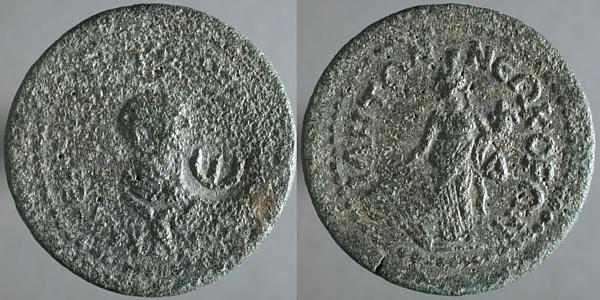
K[A]I C[E]B Π[OV] ΛIK KOPO VA[ΛEPIANO...], Bare-headed draped bust right over eagle with wings spread. IA before | CIΔHTΩN NEΩKOPΩN, Tyche standing left, holding cornucopia right and rudder left. Δ in right field.
I'm not certain of the significance of the eagle beneath young Valerian's bust. Some assert that it's a symbol of the deification of Valerian and that this is a posthumous issue. I think simply saying naming him a god on the coin would have been far simpler than engraving an eagle, and I always expect the Romans to go for the simple and pragmatic.
If I reject the “posthumous” explanation though, it doesn't bring me any closer to understanding what the eagle is for.
Thursday, March 30, 2006
Æ antoninianus, Salonina, Siscia, Göbl 1509r
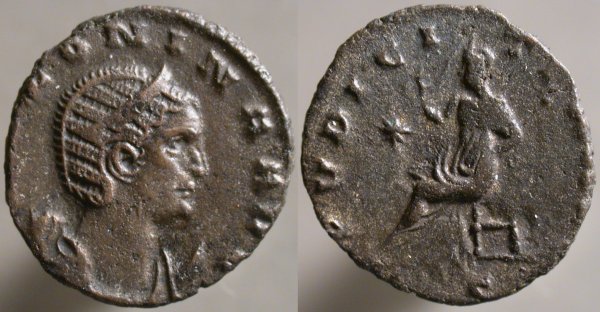
SALONINA AVG, Diademed draped bust right on crescent | PVDICITIA AVG, Pudicitia seated left, raising right hand. holding scepter in left. Star in left field, S in exergue.
Common advice to collectors is to buy the highest quality one can, and to avoid lower-end items. With poor centering and incomplete legends on both sides, this coin seems to better examplify the "don't" advice than it does the "do".
But I've never expected my collection to serve as an investment, accepting that the value is in learning about these objects from 18 centuries ago and about the era itself. In return, the incremental cost is low, which, I suppose. is why people rent an apartment when it'd be so much cheaper, in the long term, to own a house.
Update: rogueclassicism notices that Pudicitia's lap may be afire.
Wednesday, March 29, 2006
Æ follis, Severus II, Heraclea, RIC 25
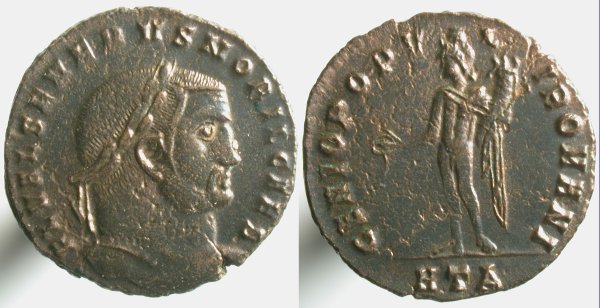
FL VAL SEVERVS NOBIL CAES, Radiate head right | GENIO POPV_L_I ROMANI, Genius, modius on head, nude except for chlamys off shoulder, standing left, sacrificing from patera with right hand, holding cornucopia with right. HTA in exergue.
Flavius Valerius Severus was appointed successor to Constantius Chlorus and was raised to Augustus on the death of that worthy. The tetrarchy of Diocletian now threatened to fail as Constantine, son of Chlorus and Maxentius. son of Maximininus, both made their own attempts for power, and factions formed and dissolved, each with armies in the field. Severus wound up as odd man out, his legionaries bribed away and his own surrender given in response to bad faith offers, followed by his murder in 307.
Tuesday, March 28, 2006
Æ25, Augusta Traiana in Thrace, Gallienus, Varbanov 500
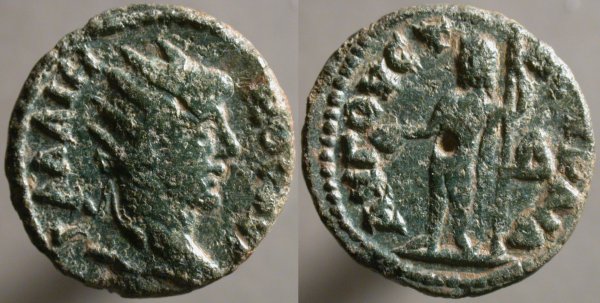
ΓAΛΛIH_NOC AVΓ, Radiate head right | AVΓOVCT_HC TPAIA, Zeus standing left, holding patera in right hand and long scepter with left. Δ in right field.
Sometimes we miss understanding just how vast the Roman empire was. Augusta Traiana, source of today's coin and these others, is today the site of Stara Zagora, a resort town in Bulgaria, famous for mineral baths.
The coins were uncommon and poorly documented before the breakup of the Soviet bloc, and a good English-language catalog of Thrace would be much appreciated.
Monday, March 27, 2006
Billon antoninianus, Gallienus, Mediolanum, Göbl 1022r
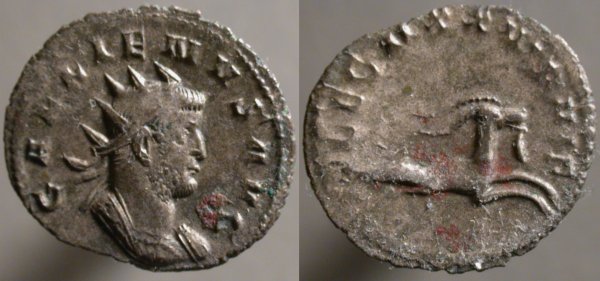
GALLIENVS AVG, Radiate cuirassed bust right | LEG IIXX VI P VI F, Capricorn springing right.
Odd, odd. While LEG IIXX isn't a conventional use of Roman numerals, it seems that the legion being honored here is Legio XXII Primigenia pia fidelis also honored on this contemporary coin which uses a more expected LEG XXII form of the legend.
Göbl attests, unexpectedly, a total of 90 examples of this reverse, making it one of the commonest legionary coins of Gallienus, and only 26 examples of the LEG XXII version.
While I'm also especially fond of the coins of Cyzikus as an intriguing series that I've made a dent in, I'm even more intrigued by the “legionary series” with its badges of the legions being honored. These are the symbols, or at least someone's representation of the symbols, under which the legionaries marched. If all ancient coins offer a chance to touch the past, some coins, like these, give us just a glimpse into the minds of the Romans.

